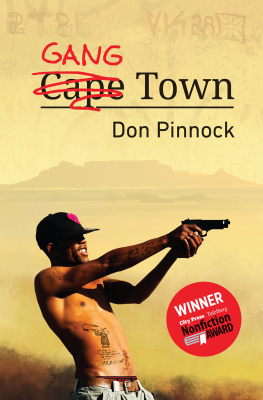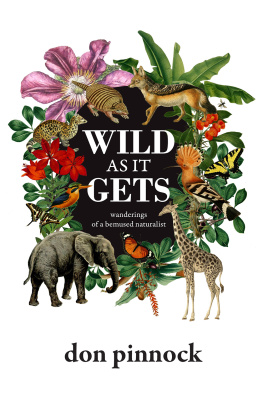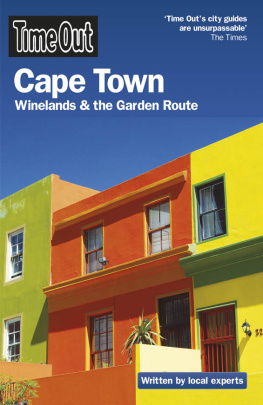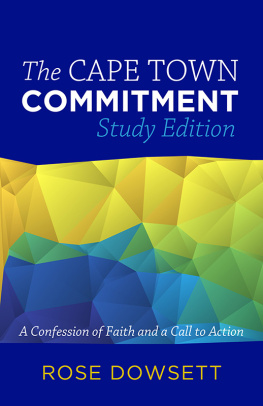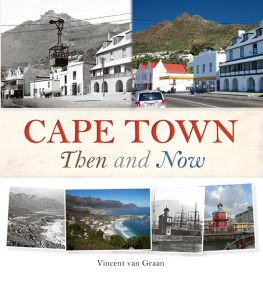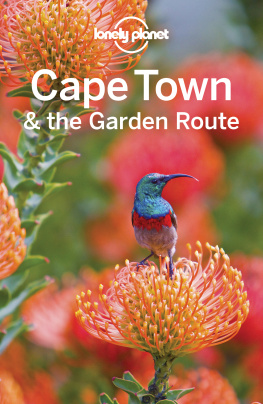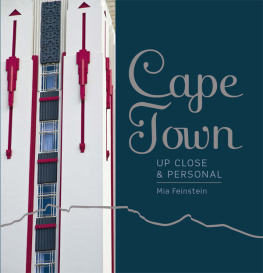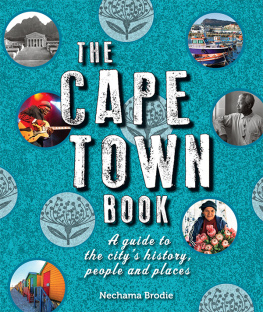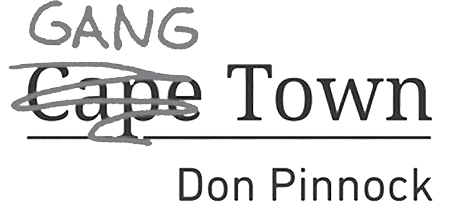
Tafelberg
The layout of this digital edition of Gang Town may differ from that of the printed version, depending on the settings on your reader. The layout displays optimally if you use the default setting on your reader. Readers can experiment with the settings to have the book displayed differently.
In memory of my father.
You were ever present here.
and
Alex la Guma,
who understood
Introduction
Boys everywhere have a need for rituals marking their passage to manhood. If society does not provide them they will inevitably invent their own.
Joseph Campbell, mythologist
One night before embarking on this book I dreamed Id been allocated a house in a rural village. It turned out to be a single wall with an old door and dirt floor, nothing else. I spent some time cleaning the floor and, as evening fell, there was a knock on the door. I opened and a hoard of ragged, hungry-looking local children flooded in. I thought: I have nothing for them. They were very sweet but rowdy, so after a while I asked them to leave, but they wouldnt. Eventually I shoved a few through the door saying: Go outside now. A boy looked at me, then at the sky where the roof should be and the sides where walls should be and said: Theres no inside.
When I awoke the meaning of the dream was clear. For around 30 years, on and off, Id been highlighting the plight of young people at risk in Cape Town in books and lectures. I had co-founded an organisation, Usiko Trust, to take young men from distressed families to beautiful wilderness places and help them build resilience in the face of absent fathers, poverty, shame and the hyper-masculinity of gang life. The message from the world of dreams was that this was just a start. So far all I had was a wall with a door through which children could enter. The structure was incomplete with no roof for protection from the elements. There was still a lot to do before the building was habitable. And children in need were not people against whom I could shut the door.
Cape Town is my adopted city I grew up in the Eastern Cape but it was love at first sight. On my initial visit in the 1960s, a journalist friend said I couldnt understand the city unless I spent time in District Six. We wandered up Hanover Street late one afternoon past scruffy little shops, corner cafes, a bustling fish market and the Star, Avalon and British bioscopes. It was alive with people and swarming with beautiful children. People said hi and howzit and did we have a smoke for them? They were happy to chat, interested in why we were there and warned us to be careful of the skollies at night.
From that moment Cape Town was for me this kind of place and these sort of people: friendly, easy going, funny and warm. That they were deemed coloured under apartheid seemed irrelevant to me. Which was odd, really. I was white and my sister and I were raised in a simple, racially defined family, my father a stern, honest policeman. Its not that we never questioned apartheid; we never really noticed it. It was just the way things were. For me, though, the idea of classifying people by their colour just wouldnt stick. The more different they appeared to be tonally or culturally, the more interesting I found them. So much so that, in the late 1960s, I joined a black newspaper The World and went to live in Soweto. My mother went proudly to buy a copy to see her son in print and phoned me aghast. What am I going to tell my friends when they ask me where you work? she asked, tearfully.
Relocating to Cape Town, several years later, neighbourhoods like District Six, Lower Claremont, Harfield Village and Elsies River felt comfortable. In a way I couldnt explain, these were people with whom I didnt have to put up a front and pretend anything. Their generosity of spirit was embracing. And thats when I became angry at the way they were being treated as second-class citizens, pushed out of their homes into racial ghettoes. But what incensed me even more was the effect on their children. Families were breaking under the strain, stress levels were rising, kids were forming surrogate families described as gangs and substance abuse was going through the roof.
My wife and I moved into a cottage in Harfield Village before segregation had ripped its coloured community apart and I began hanging out in the newly-formed racial ghettos to see the impact of the Group Areas Act on families. Many told me that when the time came to move, grandparents who couldnt bear to lose their community simply died of broken hearts. Through meeting a remarkable person and sometime drug merchant named Chicken, I was introduced to Bobby and Fatima April in Hanover Park. Bobby, known as Stone, was the leader of a gang that began in District Six as Bungalow 13 (B13) and later became the Mongrels. Stone realised I was genuinely interested and not just snooping. He let me spend time with the gang and was happy to answer my questions. Stone was proud of his gang and delighted that someone from the university was interested in it.
There were things I found out that astounded me, but which I could never break trust and divulge. The sheer size of gang enterprise and the criminal underworld, even in the early 1980s, was astonishing. The Mongrels showed me their rituals and signs, where the drugs were coming from and which cops were on the take. In return I made myself useful taking photographs for Stone, doing gangland weddings and far too many funerals. I was in his headquarters one day when a pantechnicon offloaded bags of cannabis from special compartments welded into its understructure. The trucking line, I found out, was owned by the son of one of the apartheid governments most senior cabinet ministers at the time.
My association with the Mongrels and several other gangs resulted in a book The Brotherhoods . This was followed, several years later, by a closer look at gang rituals which became Gangs, Rituals and Rites of Passage . And here I was in 2014, back in gangland nearly two decades later. The idea was to dust off my old research, see how things had changed under democracy and bring The Brotherhoods up to date. How wrong I was. The result would be an entirely new perpective and a new criminology of deviance.
In the intervening years, my adopted city had changed almost beyond recognition. On the one hand it is now more attractive, with many of the countrys best restaurants, clubs and coffee shops. It is consistently rated in the top 10 international tourist destinations and celebrities from abroad are often seen strolling along its waterfront, tanning on its beaches or enjoying themselves on elegant wine farms nearby. You can be whisked to the top of Table Mountain by a new, high-tech cable car where, after dark, the city below twinkles like scattered jewels. Many foreigners, charmed by its languid atmosphere and with strong First World currencies, have bought sea-facing homes theyd never afford back home. For holidaymakers its easy Africa, offering the amenities of Europe or America with added sunshine and the spice of adventure.
But the city has also become increasingly violent. As the sun dips in the west, the iconic mountain casts a dark shadow across the Cape Flats and some of the most dangerous neighbourhoods in the world. This is not surprising. Cape Town is home to thousands of adolescents on the road to nowhere. In overcrowded townships the chance of death by violence is now higher than in some of the worlds most volatile war zones. Here statistics trump hyperbole. In one year, between April 2014 and March 2015, there were six murders and seven attempted murders a day, 30 637 reported assaults (84 a day) In the absence of recreational amenities, sound schooling or, in many cases, stable family structures, young people have nothing to do but hang out in the streets, form friendship groups and fight or fuck each other. They do this in the knowledge that life is now, the future holds a frightening emptiness and, in many areas, the possibility of death before the age of 30 is a strong possibility.

